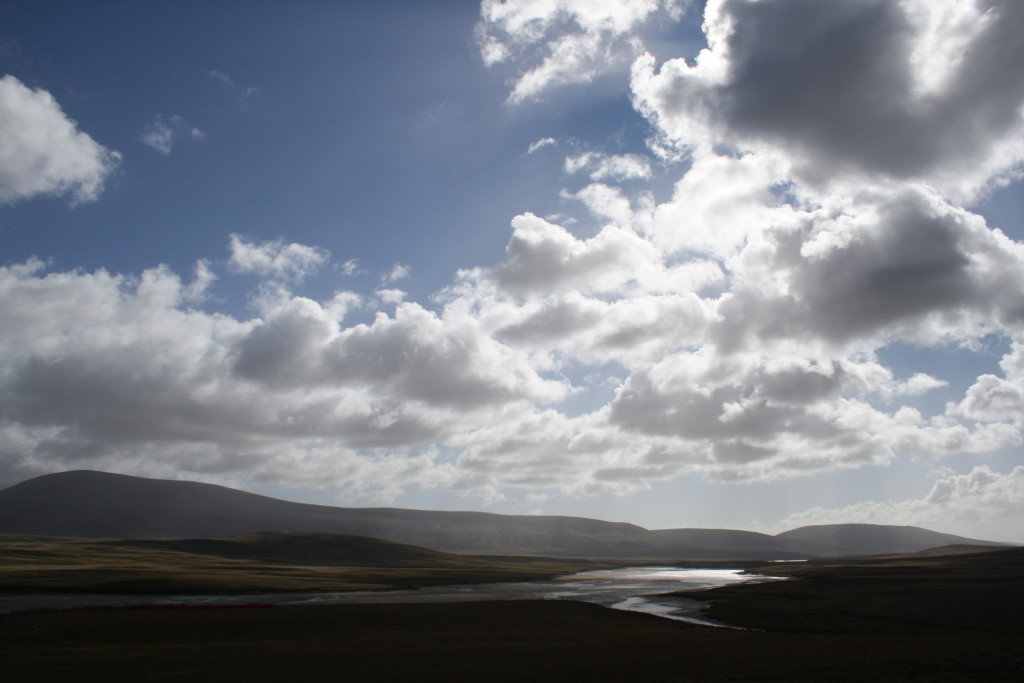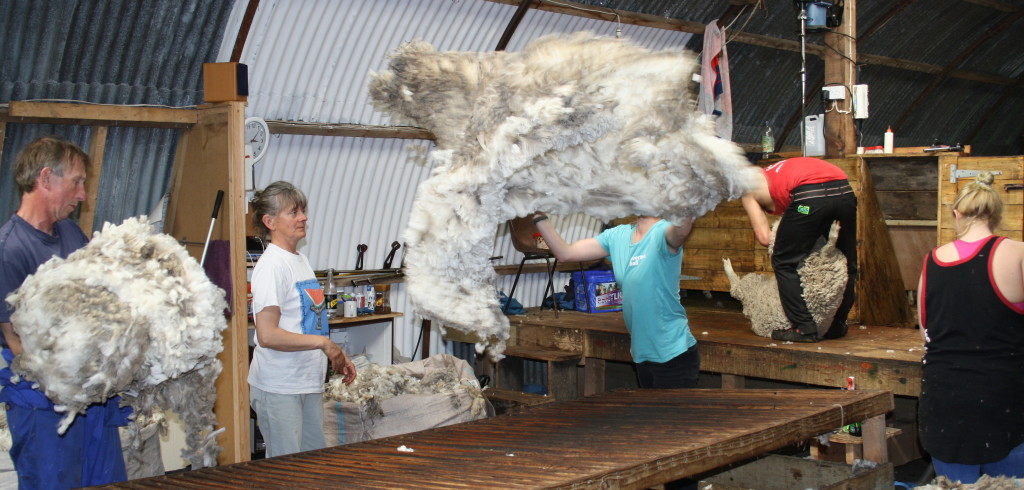I’ve been enjoying peripheral involvement with Peter Tyedmer’s students working on pollination ecosystem services. First, Andony Melathopoulos showed how tenuous ecosystem service valuations are, using pollination services as an example. Now, Caitlin Cunningham has shown how critical it is to get local field data. The first paper out of her MES thesis uses the InVEST model to explore the carrying capacity of several Nova Scotia counties for honeybees, and shows how important it is to get boots on the ground rather than rely on proxies such as ecological land classifications and other such base spatial data infrastructure. The good news for the bee industry is coming in the next paper. Congratulations, Caitlin.
Tag: Agriculture (Page 1 of 5)
I am now back from my 3+ week immersion into the farming culture of the Falkland Islands, with 700 photos, 30 hours of interviews, 20 pages of observational notes, and a strong sense of my inadequacies as a specialist within a land of self-reliant generalists. Despite coming at the busiest time in the farming calendar – shearing and lamb marking – farmers were incredibly generous in their willingness to talk, and sometimes tour and host as well. My research assistant, Marilou Delignieres, went far beyond her role as recruiter, guide and driver, happily engaging in farm work and babysitting to help me get time with farmers. Her parents, Hugues and Marie-Paul, helped us with logistics, but also provided additional opportunities during my visit. I relished my discussions with members of a contract shearing gang then working at their farm Dunbar, and got to experience a cruise ship visit, one of the ways that many farmers here diversify their incomes and benefit from hosting penguin colonies and other wildlife. I travelled by 4×4, workboat (ferry) and Islander aircraft. I marveled at all scales: skies to ground cover. These memories will sustain me through the difficult transcription phase which follows such research, and support my subsequent analysis. Thanks to the OECD Co-operative Research Programme and Dalhousie’s Supplemental Sabbatical Fund for the fellowship funding to undertake this travel, and SSHRC for its support of Marilou.

Our typology of Nova Scotia farm fragmentation based on the number of non-contiguous parcels and the time to drive across the two furthest apart parcels.
When I moved back to Canada from Australia, and started interviewing farmers in Nova Scotia, I was surprised at how small and fragmented their holdings were. I found myself wondering how this spatial pattern influenced their management. Does it mean that it is harder to think of a farm as an ecosystem, and manage accordingly? Or is it a boon for biodiversity, as remoter parcels are left to nature? I threw a few questions about farm fragmentation on our Marginal Land survey last year, and those preliminary results are now in, recently presented on a poster at ISSRM, Farm as ecosystem: What is the impact of fragmented property ownership on farm management? It show us that fragmentation in Nova Scotia is intentional, the result of purposeful land acquisition by serious farmers. While it cannot be ascribed to fragmentation alone based on the data we collected, these high fragmentation farmers were less likely to have ponds and wetlands on their properties (as a function of farm area), though they had just as many woodlands, which are seen to have high ecosystem service value (timber, etc). Moreover, high fragmentation farmers were less likely to undertake biodiversity-friendly farming techniques. I think this is enough to suggest more research is warranted. Next time I want to look for diversity within farms. Does the farmer treat far-flung parcels differently than those closer to the heart of his operations?

Kenny Corscadden moderates the CSBE panel with David Burton, Peter Swinkels, Charles Bourque and me.
Yesterday I was invited to participate in a four-person panel discussing “the impact of climate change on sustainable food production; minimizing on-farm climate related risks“, at the Canadian Society for Bioengineering meeting currently being held in Halifax. As a social scientist (certainly the only one on the panel, possibly in the room) I really enjoyed the opportunity to engage with individuals tackling the technical solutions to climate change mitigation (e.g. bioenergy) and adaptation (e.g. water management) about social license and political will. Contributions covered some challenges and solutions, including meeting the increasing unpredictability of agricultural inputs with a resilience approach, re-engineering landscapes for ecosystem function and diversity. I also discussed the importance of understanding farmer perceptions and uptake of new techniques and technologies, increasingly challenging given the dearth of spatial and social science data infrastructure (e.g. farmer databases for surveys, commodity and soils maps) and given the poor state of agricultural extension in this country. Tradition is a powerful thing in agricultural settings, and what it means to be a ‘good farmer’ will take time to shift, for farmers and policy-makers. We have a limited set of policy instruments: information (education), persuasion (moral appeals), assistance (incentives) and regulation, but perhaps the most important of all is to look first – before making new policy – to see if there are any perverse policies in place that discourage useful action. Perverse incentives that encourage the delaying of adaptation, like event-based insurance, serve as buffers that will not prepare farming well for new climate futures.
I’m enjoying a stopover in Chicago on the way to the ISSRM in Michigan. The city has always been of interest to me, as a once-aspiring architect and child of the 80s, but this has been my first chance to visit. I re-watched Ferris Bueller’s Day Off on the flight here (happy 30th birthday), and headed straight for Frank Lloyd Wright sites in Oak Park upon arrival. A real highlight of my visit has been the Art Institute of Chicago special exhibition America After the Fall: Painting in the 1930s. This expertly curated and described exhibition explores the response of artists to the ‘fall from grace’ that America felt after the stock market crash of 1929: some looking backward to pastoral ideals and others conveying dust bowl realities; showing stoic tradition or grotesque modern life; and documenting the dominance of industry in landscape and economic life conveyed as utopias (in some work sponsored by corporations) or the opposite by socialists. The industrial (Charles Sheeler, Charles Demuth) and agricultural (Grant Wood, Alexander Hogue, Marvin Cone) landscapes were particularly compelling to me: telling of fears and hopes, as well as ambivalence. Functional landscapes were in eye as well as in mind as I travelled Chicago by L-train (elevated), which provides a great view of the working parts of the city, as well as its unique features such as the dominance of brick construction, steel bridges (including old drawbridges) over its many rivers, and water towers (which may have something to do with the Great Fire of Chicago, ca. 1871). I was also reminded of urban/nature juxtapositions at the wonderful Garfield Park Conservatory, where the marvelous fern room brought relief on a very hot day, in how the City Garden meadow beautifully framed industrial buildings. I look forward to returning to Chicago, maybe in a cooler season.





